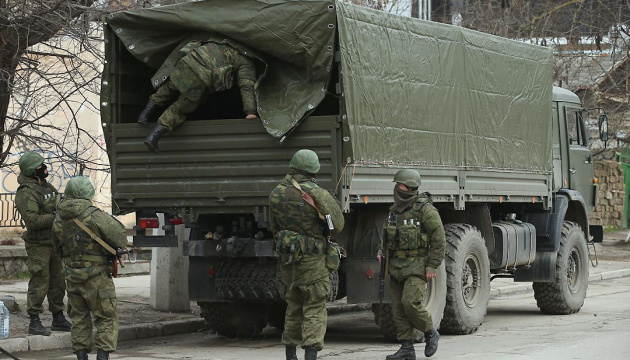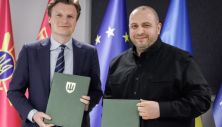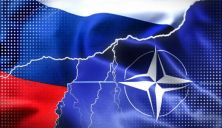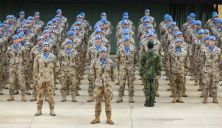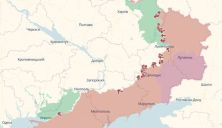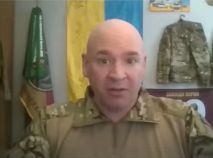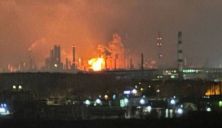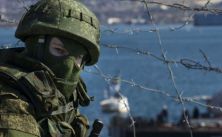Earlier, The Washington Post, citing a United States intelligence document, reported that Russia plans to launch an offensive against Ukraine on several fronts as early as 2022. 175 thousand Russian servicemen will be involved in the offensive operation.
“Russian plans envisage a military offensive against Ukraine in early 2022 with a scale of forces that is double what we saw last spring during Russia’s surprise exercises near Ukraine’s borders” – the article says.
Also, Western media have unveiled the Kremlin’s plans to invade Ukraine. Thus, the BILD edition, citing its own sources, reported that at the first stage, Vladimir Putin was going to seize the south of Ukraine, “to cut off from the sea, and therefore from supplies.” In particular, Russia allegedly plans to use amphibious ships transferred from the Baltic Sea to the region in the spring. Another high-ranking military man clarified that Russia is planning a landing operation “east of Odesa, between the villages of Fontanka and Koblevo.” Russian troops are going to “advance northeast of the city, then turn left and head towards Transnistria,” as a result of which Odesa will be cordoned off. At the same time, in the Kherson region along the Dnipro, “airborne operations of special forces” will take place. They will block bridges across the country’s most important river.
According to the source, Russian tank units will begin to move westward from the occupied Donbas, then split and move to Zaporizhzhia and towards Crimea. At the same time, Russian tank units can cross the border in Lugansk and Kharkov regions and head to large cities, Dnipro and Poltava. And at the third stage, according to the source, the Kremlin army will attack Kyiv from the north.
What is the current number of Russian troops on the border with Ukraine – in the material of UA.
Russia has begun to move military helicopters to its borders with Ukraine. This could mean continuing to plan an attack on our territories. This is how the American edition of The New York Times assessed the possibility of a new invasion of Ukraine by the aggressor country.
At the same time, it is noted that the pulling-in of troops has slowed down somewhat and now their number remains stable, despite the forecasts of the American intelligence about the growth.
Reportedly, 100,000 Russian servicemen are still stationed near the Ukrainian borders. This number was announced at a briefing on January 10 by the representative of the United States Department of State Ned Price.
“The buildup began with unusual displacements that have now culminated in nearly 100,000 soldiers” – he said.
It is noted that attack and transport helicopters, as well as assault fighters, could be an important advantage for Russia in the event of an invasion.
US officials believe that the behavior of the aggressor country about the escalation may be dictated by weather conditions. Thus, severe frosts would allow heavy equipment to move easily, but a relatively mild winter slowed down the freezing of the earth. Therefore, the Kremlin is likely forced to postpone the offensive until at least February, according to US administration officials.
According to one of them, the White House brought in meteorologists to take a closer look at the weather conditions in Ukraine in the coming weeks and to better understand the situation.
According to US officials, there are just under 60 battalion tactical groups currently stationed in Russia, or anywhere from 85,000 to 100,000 troops. These forces conducted maneuvers and exercises, demonstrating that Russian troops are at the highest level of readiness.
The Russian government has made a request for additional units specialized in logistics. While aviation will be critical to protecting ground forces during an invasion, logistic support units will be required to support the ground forces in the event that Putin orders his troops to cross the border.
There are more than 150 US military advisers in Ukraine, instructors who have worked for years at a training ground near Lviv, in the west of the country, far from the front line. The current group includes the Special Operations Forces, mostly Army Green Berets, as well as National Guard instructors from the Florida 53rd Infantry Brigade’s battle group.
US officials say there are military advisers from about a dozen allied states in Ukraine. Several NATO countries, including the United Kingdom, Canada, Lithuania and Poland, regularly send training units to Ukraine.
Earlier, the Russian opposition politician, deputy of the State Duma of the Russian Federation (2007-2016) Ilya Ponomariov said that the Kremlin was not planning a full-scale invasion of Ukraine. Today, the main goal of Putin is Belarus.
Read also: Russia’s Military Escalation Against Ukraine (LIVE UPDATES)

